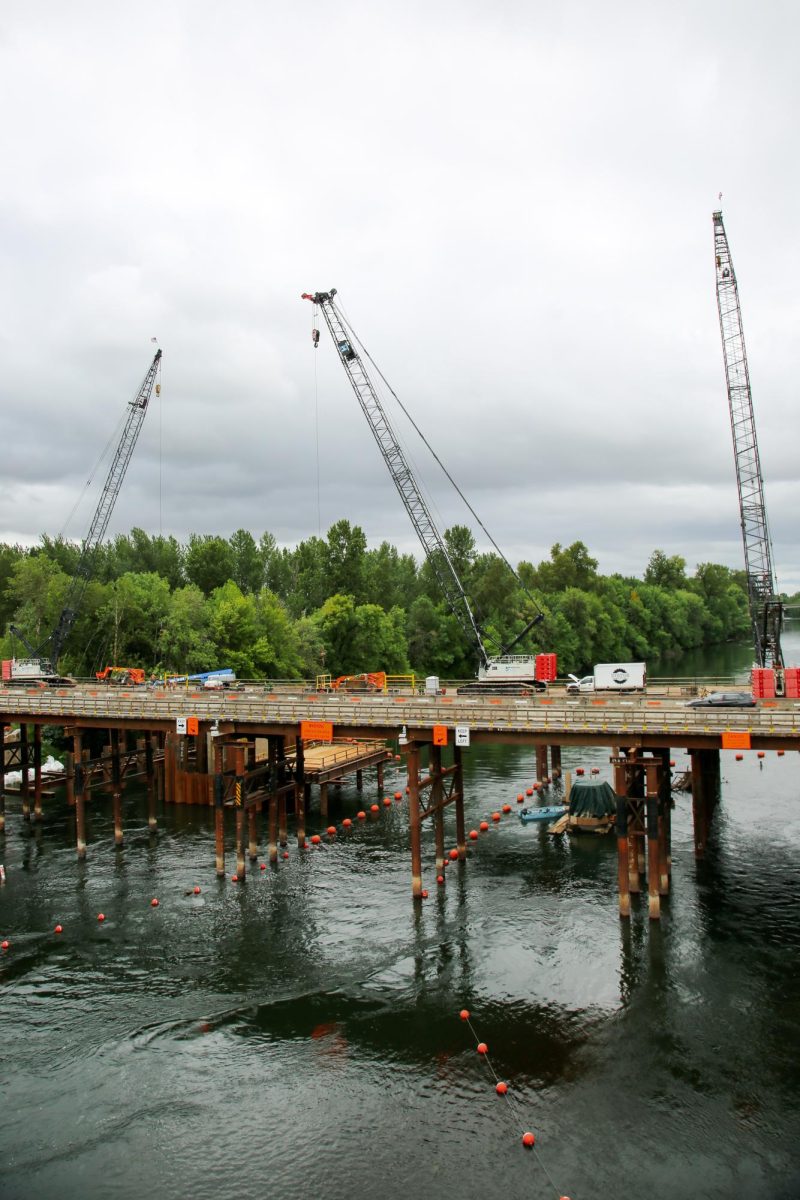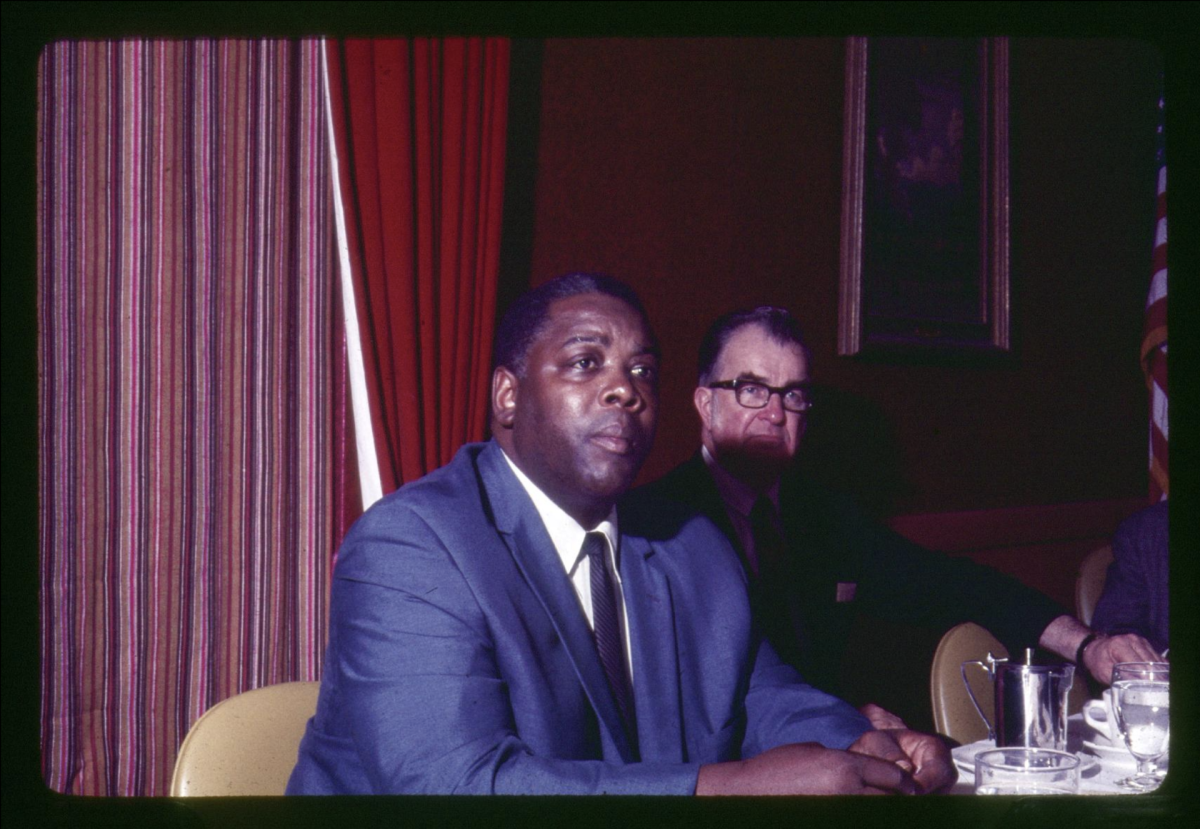The current Van Buren Bridge was considered seismically unstable in 2019. Due to its narrow design, low clearance and weight restriction, the bridge acted as a bottleneck for all vehicles.
The present bridge is being replaced with an earthquake-resistant structure that has two lanes for eastbound traffic, a bike lane and a protected pathway for pedestrians and cyclists. Additionally, changes will be made at the intersection of NW First Street and Van Buren Avenue, where a new signal will take the place of the existing yellow pedestrian crossing light that flashes.
According to Mindy McCartt, a public information officer for the Oregon Department of Transportation, the Van Buren Bridge Project is moving right along, the workers have not had any major issues with the construction.
“Construction started back up at the beginning of (June), as the next stages are in water construction where we needed to wait for warmer weather to start,” McCartt said.
McCartt said that they aim to shift traffic on to the new bridge by late spring or early summer of 2025. This would allow for the clean up of the two temporary bridges during the summer of 2025, followed then by the site restoration and complete clean up of the construction zone.
A majority of the project’s funds come from the HB2017 Bridge Seismic Initiative, a house bill with the intention of funding safer transportation, which was passed in 2017. This project is estimated to cost $85 million.
According to Patrick Rollens, a public information officer for the city of Corvallis, ODOT has done a good job of keeping local businesses, citizens and the city department informed throughout the whole construction process.



















































































![Newspaper clipping from February 25, 1970 in the Daily Barometer showing an article written by Bob Allen, past Barometer Editor. This article was written to spotlight both the student body’s lack of participation with student government at the time in conjunction with their class representatives response. [It’s important to note ASOSU was not structured identically to today’s standards, likely having a president on behalf of each class work together as one entity as opposed to one president representing all classes.]](https://dailybaro.orangemedianetwork.com/wp-content/uploads/2025/03/Screenshot-2025-03-12-1.00.42-PM-e1741811160853.png)

























